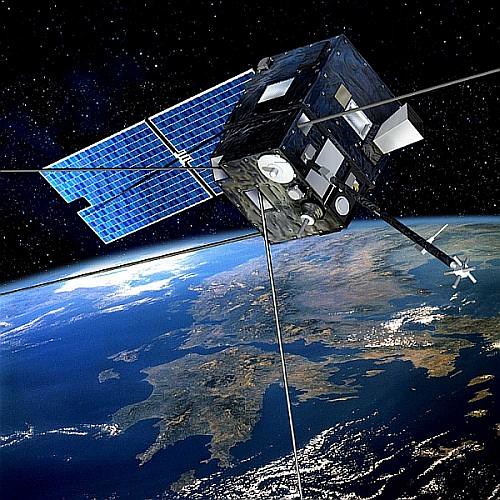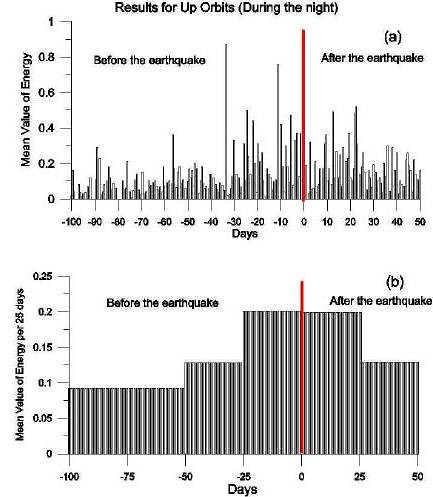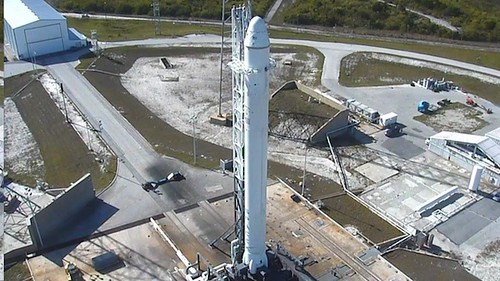Lockheed Martin A2100 commercial communications satellite fleet achieves milestone of 300 years of cumulative successful in-orbit operations.
[PR-USA.NET – 12/18/2010]
Lockheed Martin is awarded a contract modification worth approximately $1.4B by the Military Satellite Communications Systems Directorate for the fourth Advanced Extremely High Frequency satellite.
[U.S. Air Force web site – 12/17/2010]
The European Space Agency (ESA) and Arianespace sign launch Service & Solutions contract for the Sentinel-1A satellite as part of the European program GMES (Global Monitoring for Environment and Security).
[SatNews – 12/17/2010]
GVF (Global VSAT Forum) unveils a global initiative to facilitate delivery of state-of-the-art connectivity solutions in support of corporate-social-responsibility projects supported by the oil, gas, mining, banking, and other
enterprise sectors.
[SatNews – 12/17/2010]
Harris is awarded 30-month $42M contract by Sierra Nevada Corporation to supply antenna and radar electronics for satellite to provide military commanders in the field timely, high-resolution images of Earth’s surface.
[SatNews – 12/17/2010]
DISH Network delivers variety of 3D movies including "Cats and Dogs: The Revenge of Kitty Galore," "The Last Airbender," "A Christmas Carol" and "Step Up 3D."
[SatNews – 12/17/2010]
Russia’s Mission Control Center loses contact with the International Space Station for about three hours on Thursday before resolving a fiber-optic network problem.
[SatNews – 12/17/2010]
Globalstar successfully tests new second generation satellite with its first commercial telephone call.
[SatNews – 12/16/2010]
Italian COSMO-SkyMed constellation fully operational and complete with arrival of system’s fourth satellite in its final orbit position.
[SatNews – 12/16/2010]
NASA’s Mars Odyssey, which launched in 2001, will break the record Wednesday for longest-serving spacecraft at the Red Planet.
[SatNews – 12/16/2010]
India’s Geo-synchronous Satellite Launch Vehicle (GSLV-Fo6) is scheduled to launch the GSAT-5 Prime satellite on December 20.
[The Hindu – 12/16/2010]
RF Monoliothics ships one hyundred millionth surface acoustic wave (SAW) filter used in satellite digital radio receivers.
[SatNews – 12/16/2010]
Chambers Communications pulls its Oregon ABC affiliates from Dish Network’s system when the two are unable to reach agreement on rates, which Dish says Chambers wants to increase by 500%.
[hd-report – 12/17/2010]
Iridium expects falling equipment sales to hurt its 2011 revenue.
[Bloomberg – 12/16/2010]
Army’s first satellite in decades, a tiny nano-satellite, is slated for experiments to demonstrate technologies that will be used by a number of identical satellites.
[Signal Online – 12/16/2010]
DigitalGlobe wins three imagery supply contracts in China.
[Satellite Today – 12/16/2010]
According to NSR’s Government and Military Satellite Communications report just released, the industry will continue revenue gains until 2019 despite the imminent troop drawdown and complete withdrawal of allied troops in Iraq and Afghanistan.
[SatNews – 12/16/2010]
Canadian Space Agency and European Space Agency renew space science and technology partnership agreement through 2020.
[Satellite Today – 12/16/2010]
Initial tests of HYLAS 1 satellite have gone well as it makes "excellent progress" toward supplying satellite broadband services to consumers and businesses in the UK.
[Top10.com – 12/16/2010]
XINHUA’s CNC World English channel to reach out in Europe, Middle East, and Africa on Eutelsat’s HOT BIRD, EUROBIRD, and W7 satellites.
[PR Newswire – 12/16/2010]
Obama signs bill to prevent advertisers from abruptly raising the volume of TV commercials louder than regular programming.
[Washington Post – 12/16/2010]
Wikileaks accuses New Zealand government of spying on Fiji’s Military Forces using satellite monitoring facility in Waihopai Valley.
[fijivillage.com – 12/16/2010]
The Space Tracking and Surveillance System (STSS) Demonstration satellites show ability to maximize defended areas through earlier tracking of launched missiles.
[SatNews – 12/15/2010]
Thales Alenia signs contract with Empresa Argentina de Soluciones Satelitales SA, ARSAT, tor supply payload for the second Argentine geostationary telecom satellite ARSAT-2.
[SatNews – 12/15/2010]
SES ASTRA wins CME as anchor customer for its 31.5 degrees East orbital position (ASTRA 1G + ASTRA 2C).
[SatNews – 12/15/2010]
RRSAT expands New York metropolitan area fiber connectivity.
[PR Newswire – 12/15/2010]
ViaSat and the Joint Program Executive Office for Joint Tactical Radio System integrate commercial mobile SATCOM networks with JTRS networks to interconnect air, land, and sea forces.
[Satellite Spotlight – 12/15/2010]
China Great Wall Industry to deliver orbital communications satellite and ground application system to Bolivia.
[People’s Daily Online – 12/15/2010]
SES obtains $171.5M insurance policy covering construction and launch of QuetzSat satellite.
[Space News – 12/15/2010]
Boeing says antenna reflector on satellite built and launched for LightSquared has been successfully fully opened, resolving malfunction discovered after launch in November.
Bloomberg – 12/14/2010]
Orbital Sciences submits proposal to NASA in response to Commercial Crew Development-2 contract solicitation, for a "blended lifting body" vehicle to launch atop expendable launch vehicle.
[mfrtech.com – 12/14/2010]
Basic build-up of the milestone 200th Ariane for launch is now complete at the Spaceport in preparations for February launch of European Automated Transfer Vehicle (ATV).
[SatNews – 12/14/2010]
NASA loses contact with the nanosatellite NanoSail-D, launched last week from the Fast, Affordable, Science and Technology Satellite (FASTSat).
[Satellite Today – 12/14/2010]
SES plans expansion in Africa with much needed additional capacity and new local offices and staff.
[SatNews – 12/14/2010]
Arianespace reschedules launch of HISPASAT 1E and KOREASAT 6 to allow one customer to perform complementary checks on its payload.
[SatNews – 12/14/2010]
Iran plans second spaceport.
[SatNews – 12/14/2010]
Export-Import Bank of U.S/. approves $171.5M loan to support export of Ku-band broadcast satellite by Space Systems-Loral to SES S.A. of Luxembourg.
[SatNews – 12/14/2010]
SES ASTRA signs capacity agreement with Ukraine’s Ukrkosmos for video delivery via its 31.5 degrees east orbital position.
[SatNews – 12/14/2010]
WBMSAT PS satellite communications systems services













